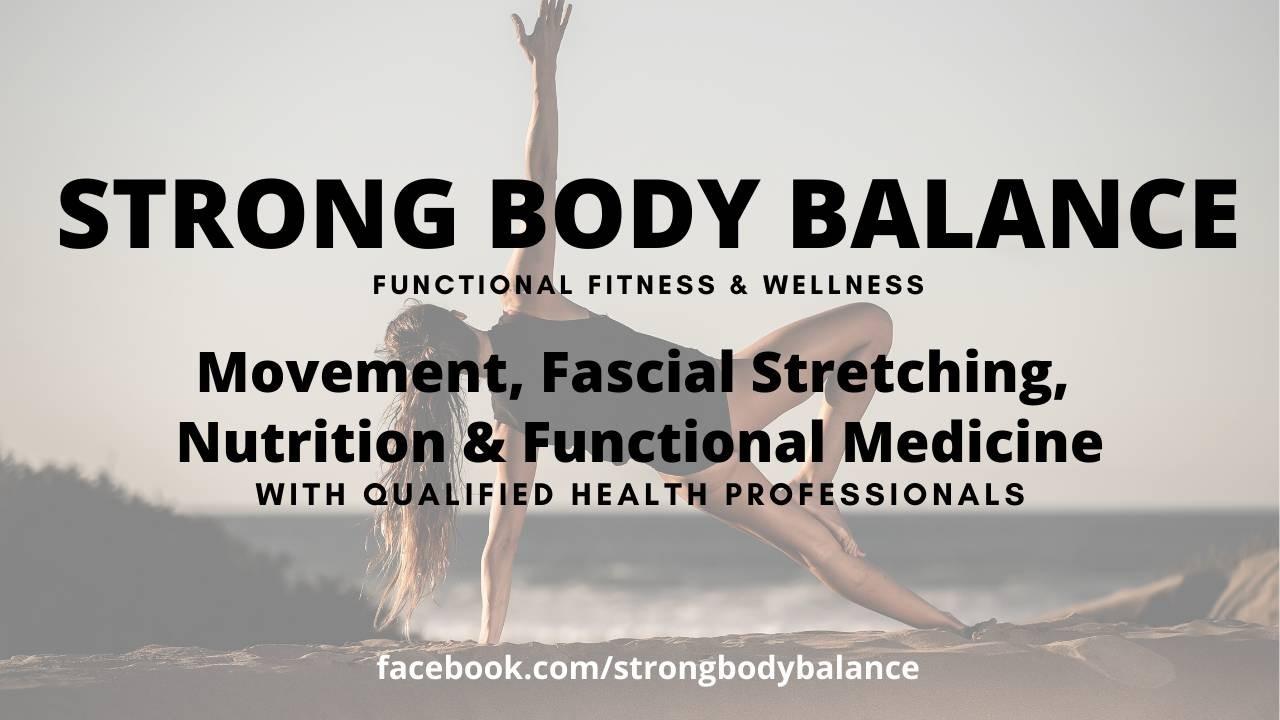How to get More Movement in your day!
Jun 08, 2020
Most people KNOW that physical inactivity is detrimental to health. The human body is developed in such a way that most systems (skeletal, muscle, metabolic and cardiovascular) do not develop and function in an optimal way, unless they’re stimulated by regular physical activity (Booth et al., 2008). Inactivity ranks 4th among the 5 leading causes of GLOBAL mortality, along with high blood pressure, tobacco use, high blood glucose and obesity (World Health Organization, 2009). The health risks of physical inactivity are similar to tobacco use (Lee et al., 2012). There is one simple solution: BE ACTIVE and MOVE OFTEN!!! Start TODAY and move more!
Inactivity increases the risk of adverse health conditions that are major causes of death and disability worldwide (United Nations, 2011, 2018), including:
HOW MUCH ACTIVITY IS ENOUGH?
The benefits of physical activity are extensive. Evidence clearly demonstrates regular physical activity is one of the most important things people, of any age, can do to improve their health. Many doctors call it the ‘miracle drug’ to drastically improve the quality and quantity of life! Dr. Mike Evans has an excellent video explaining the benefits of only 30 minutes /day!
The Canadian Society of Exercise Physiology, Health Canada and most fitness and health organizations promote 150 minutes of moderate intensity physical activity each week. That’s 30 minutes - 5 days / week.
MORE REASONS TO MOVE MORE OFTEN!
- Average Canadians sit ~10 hours/day, some people up to 15 hours/day!
- More than 6 hours/day of sitting has been linked to increased risk of lifestyle related diseases.
- Both the total volume of sedentary time (>12 hours/day) and the bout duration of prolonged sitting has the greater risk of death[i] Prolonged Sedentary Time was independently associated with deleterious health outcomes (cancer, cardiovascular disease, and diabetes). Low physical activity levels had a higher risk than those who do have high levels of physical activity with prolonged sedentary time[ii].
HOW TO MAKE IT HAPPEN?
- Small breaks in sedentary behaviour can improve health measures, even with high levels of sedentary work in a day[iii]. Small increases in movement to light intensity, equivalent to ~100 movements or steps/ minute for a few minutes at a time is all it takes!
Breaking up your sedentary work can be simple, and small increases in movement to reach a ‘light intensity’ for a few minutes at a time is all it takes! Movements equivalent to a brisk walk, or ~100 steps/ minute will increase your heart rate and metabolic rate enough!
Newbie:
- Mid-morning take a 5 minute movement break, take a 10 minute walk at lunch, and another 5 minute walk mid afternoon
- Start tracking your steps – begin where you are and increase the total # of steps 5% each week
This accumulates to 20 minutes of time, you can do AT WORK, leaving you ONLY another 10 minutes/ day, or 50 minutes in your week to get the other movement completed for 150 min total!
Intermediate:
- Step tracking: Begin where you are, and increase the total # of daily steps 10% each week. A starter goal is 10,000 / day.
- Take movement breaks every hour for 2-4 minutes. This is critical for your spinal health if you are in a sitting job! It also helps your circulation, metabolism, and posture – all of which impact your mood and mindset!
Mastered the Intermediate:
- Track your heart rate – ensure your heart rate increases at least 25% from it’s resting state when you take your movement breaks
- Hourly (start with every other hour) movement breaks of 3-5 minutes, with strength movements to blast your metabolism
- Ensure you are doing strength training exercise with a focus on posture and technique with functional full body movements at least 2 / week
How to move more at home or office, with no equipment?
- Small micro-breaks at your desk to stand, stretch and increase your circulation to increase your metabolic rate are useful to elevate the body from a sedentary state.
- When you answer the phone, start a new file or task – what habit can you create that fits into your workday tasks??
- Fitness and movement trackers or calendar reminders
- Keep a picture or symbol that reminds why YOU want to move more! Having a reason that is meaningful to you works best!
- Try one of my free PILATES or INTERVAL TRAINING programs at https://www.mindygulas.com/store

REFERENCES:
[i] Patterns of Sedentary Behavior and Mortality in U.S. Middle-Aged and Older Adults: A National Cohort Study, Published in the Annals of Internal Medicine, 2017; 167(7): 465-475, published at www.annals.org on Sept 12, 2017 © 2017 American College of Physicians
[ii] Sedentary Time and Its Association with Risk for Disease Incidence, Mortality, and Hospitalization in Adults: A Systematic Review and Meta-analysis. Aviroop Biswas, BSc; Paul I. Oh, MD, MSc, Guy E. Faulkner, PhD; Ravi R. Bajaj, MD; Michael A. Silver, BSc; Marc S. Mitchell, MSc; David A. Alter, MD, PhD. Published in the Annals of Internal Medicine, 2015; 162(2): 123-132.
[iii] Too Much Sitting: The Population-Health Science of Sedentary BehaviourNeville Owen,1 Geneviève N Healy,1,2 Charles E. Matthews,3 and David W. Dunstan2, Published in Exercise Sport Science Review, 2010, July (38): 105-113
[iiii] Global Action Plan on Physical Activity 2018-2030, More Active People for a Healthier World,https://www.who.int/publications/i/item/global-action-plan-on-physical-activity-2018%e2%80%932030
If this topic interests you and you would like to know more, please look further at the information and programs available, or book a call to ask your specific questions!
How 'well' are you doing?
Try this quick wellness assessment for an overview of how well you are managing your mind and body with work and life! Once you finish, reach out to Mindy for a complimentary coaching chat.
We hate SPAM. We will never sell your information, for any reason.


